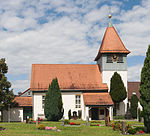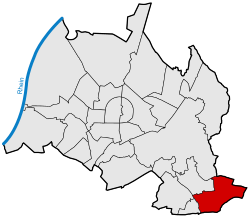Grünwettersbach
Boroughs of KarlsruheKarlsruhe

Since its incorporation in 1975, Grünwettersbach has been a district in the southeast of Karlsruhe. Together with Palmbach (located further southeast), Grünwettersbach forms the administrative unit Wettersbach. Grünwettersbach is naturally located in the northern Black Forest and has been part of the Central/North Black Forest Nature Park since January 2021. It can be reached via the Karlsbad junction on the Bundesautobahn 8 between Karlsruhe and Pforzheim.
Excerpt from the Wikipedia article Grünwettersbach (License: CC BY-SA 3.0, Authors, Images).Grünwettersbach
Pfeilerweg, Karlsruhe Grünwettersbach (Wettersbach)
Geographical coordinates (GPS) Address Nearby Places Show on map
Geographical coordinates (GPS)
| Latitude | Longitude |
|---|---|
| N 48.95 ° | E 8.45 ° |
Address
Pfeilerweg
76228 Karlsruhe, Grünwettersbach (Wettersbach)
Baden-Württemberg, Germany
Open on Google Maps










